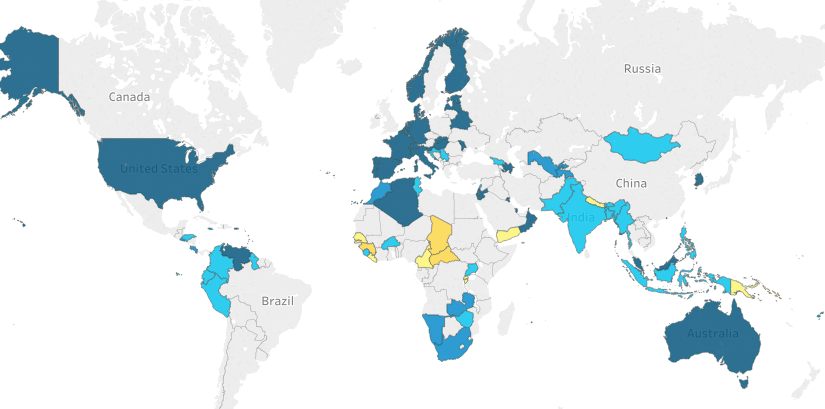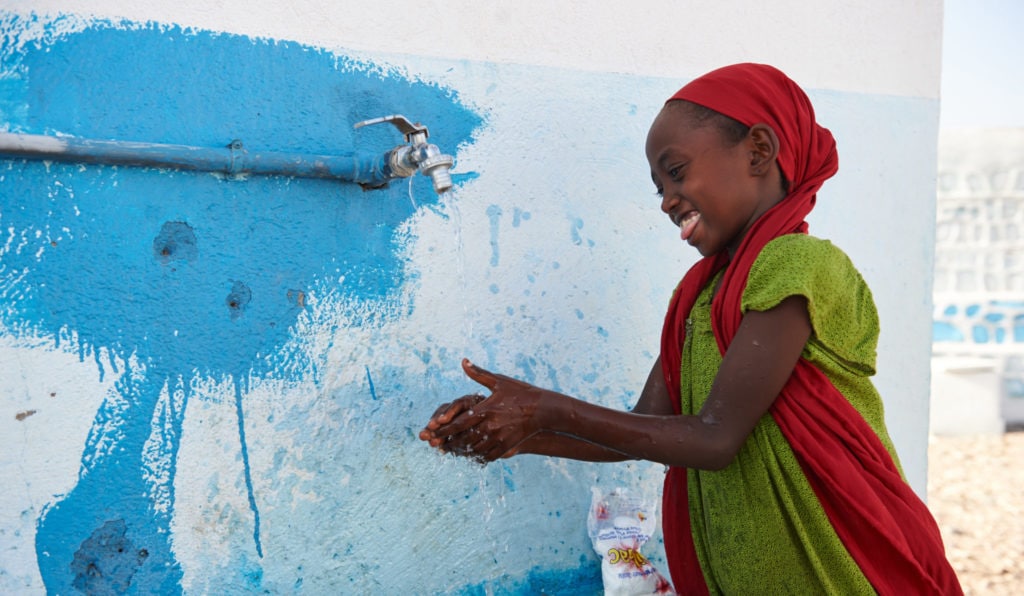Progress on drinking water, sanitation and hygiene in schools
Special focus on COVID-19

Global school closures in response to the COVID-19 pandemic affect up to 1.6 billion children and present an unprecedented risk to their education and wellbeing. WHO and UNICEF guidelines on infection prevention in schools identify a range of measures that need to be in place for schools to reopen and operate safely, including regular handwashing with soap and water, daily disinfection and basic drinking water and sanitation services. Yet the latest global estimates found that in the 60 countries identified as having the highest risk of health and humanitarian crisis due to COVID-19, one in two schools lacked basic water and sanitation services and three in four lacked basic handwashing services at the start of the pandemic. Accelerating progress in countries with the lowest coverage of WASH in schools will therefore be critical to improving school safety during the COVID-19 pandemic and beyond.
Download the report: English French Spanish Arabic Russian
Drinking water in schools
The provision of water at schools is one of the ‘highly effective practices in increasing access and learning outcomes’. In addition to the necessity of water to maintain personal and environmental hygiene, reducing student dehydration in schools has been associated with improved cognitive abilities. In 2019, 69 per cent of schools around the world had a basic drinking water service, but coverage varied widely between regions. In sub-Saharan Africa and Oceania, less than half of schools had a basic drinking water service, compared with two out of three schools in Central and Southern Asia and four out of five schools in Northern Africa and Western Asia. Europe and Northern America and Australia and New Zealand had already achieved universal coverage – greater than 99 per cent – but there were insufficient data to estimate basic drinking water coverage in schools in Eastern and South-Eastern Asia and in Latin America and the Caribbean in 2019. Based on available data, achieving universal access to basic drinking water services in schools by 2030 will require a seven-fold increase in current rates of progress.
Sanitation in schools
The availability of functional and private school toilets can positively impact health and learning outcomes, particularly for girls. In 2019, 63 per cent of schools around the world had a basic sanitation service, but coverage varied widely between regions. In sub-Saharan Africa and Oceania, less than half of schools had a basic sanitation service, compared with two out of three schools in Central and Southern Asia, three out of four schools in Latin America and the Caribbean, and four out of five schools in Northern Africa and Western Asia. Europe and Northern America and Australia and New Zealand had already achieved universal access (>99 per cent) but there were insufficient data to estimate basic sanitation coverage in schools in Eastern and South-Eastern Asia. Achieving universal access to basic sanitation services in schools by 2030 will require a five-fold increase in current rates of progress.
Hygiene in schools
Handwashing has strong links to health, particularly in public or institutional settings such as schools. In 2019, 57 per cent of schools around the world had a basic hygiene service – handwashing facilities with soap and water – but coverage varied widely between regions. In Oceania fewer than one in five schools had a basic hygiene service, compared with one in four schools in sub-Saharan Africa and just over half of schools in Central and Southern Asia. Three out of five schools in Latin America and the Caribbean and four out of five schools in Northern Africa and Western Asia had a basic service. Seven out of eight regions had enough data to estimate trends in basic hygiene coverage between 2015 and 2019. Achieving universal access to basic hygiene services in schools by 2030 will require a four-fold increase in current rates of progress.


